Country
Crash of a Rockwell Aero Commander 560F in Venice: 1 killed
Date & Time:
Dec 26, 2011 at 1406 LT
Registration:
N560WM
Survivors:
No
Schedule:
Venice - LaFayette
MSN:
560-1305-58
YOM:
1964
Crew on board:
1
Crew fatalities:
Pax on board:
0
Pax fatalities:
Other fatalities:
Total fatalities:
1
Captain / Total hours on type:
1500.00
Aircraft flight hours:
5826
Circumstances:
The airplane departed and was climbing to an assigned altitude when the pilot informed an air traffic controller of a loss of engine power on the left engine. The pilot received radar vectors back to the departure airport and reported the airport in sight. There was no further communication with the controller. Review of radar data revealed that the airplane was about 825 feet from and 200 feet above the landing runway threshold. Seventeen seconds later, the airplane was at 100 feet above ground level and left of the intended landing runway. The last radar return was 5 seconds later, and the airplane was at 200 feet above ground level. A witness observed the airplane in the vicinity of landing runway. The airplane pitched straight up, stalled, spun to the left three times before it collided with the ground and caught fire. Postcrash examination of the airframe and flight controls revealed no anomalies. The left engine was disassembled and all connecting rods were intact except for the No.2 connecting rod. Metallugical examination of the connecting rod revealed that the bearing failed, most likely due to a progressive delamination of the bearing. Review of the airplane flight manual revealed a minimum of 300 feet of altitude is required to recover from power-off stalls with 7500 pounds at both forward and aft center of gravity. The stall speed with the landing gear and flaps up with 0 degree angle of bank is 83 miles per hour or 72 knots. The stall speed with the landing gear extended and the flaps down is 73 miles per hours or 63 knots.
Probable cause:
The pilot’s failure to maintain adequate airspeed during a single-engine approach, which resulted in an aerodynamic stall. Contributing to the accident was the total loss of power in the left engine due to a failed No. 2 connecting rod bearing.
Final Report:
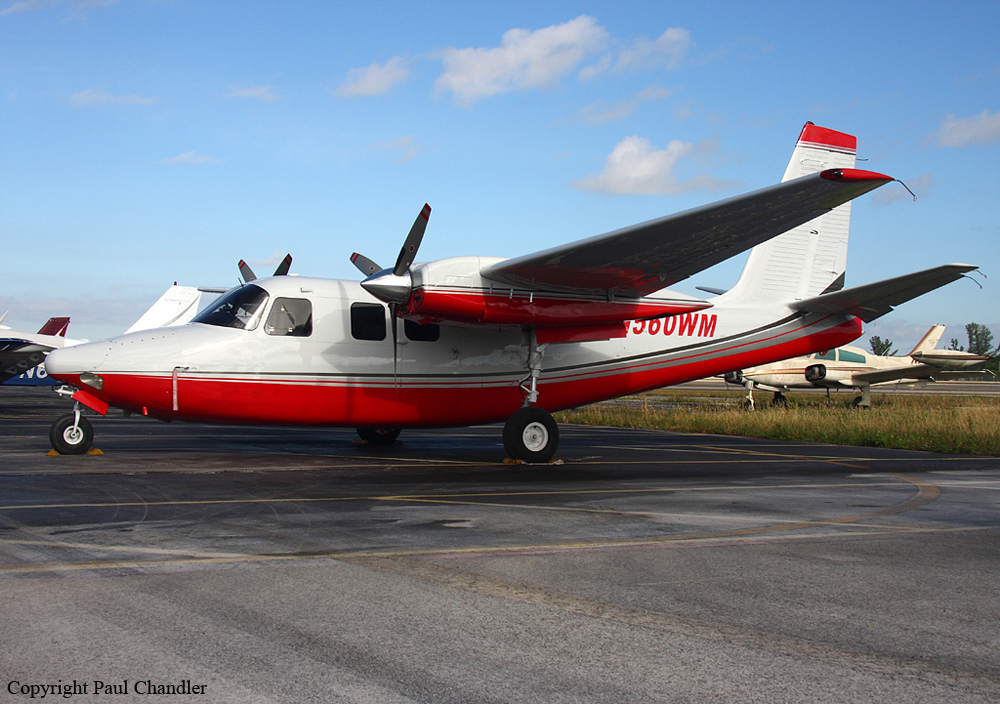
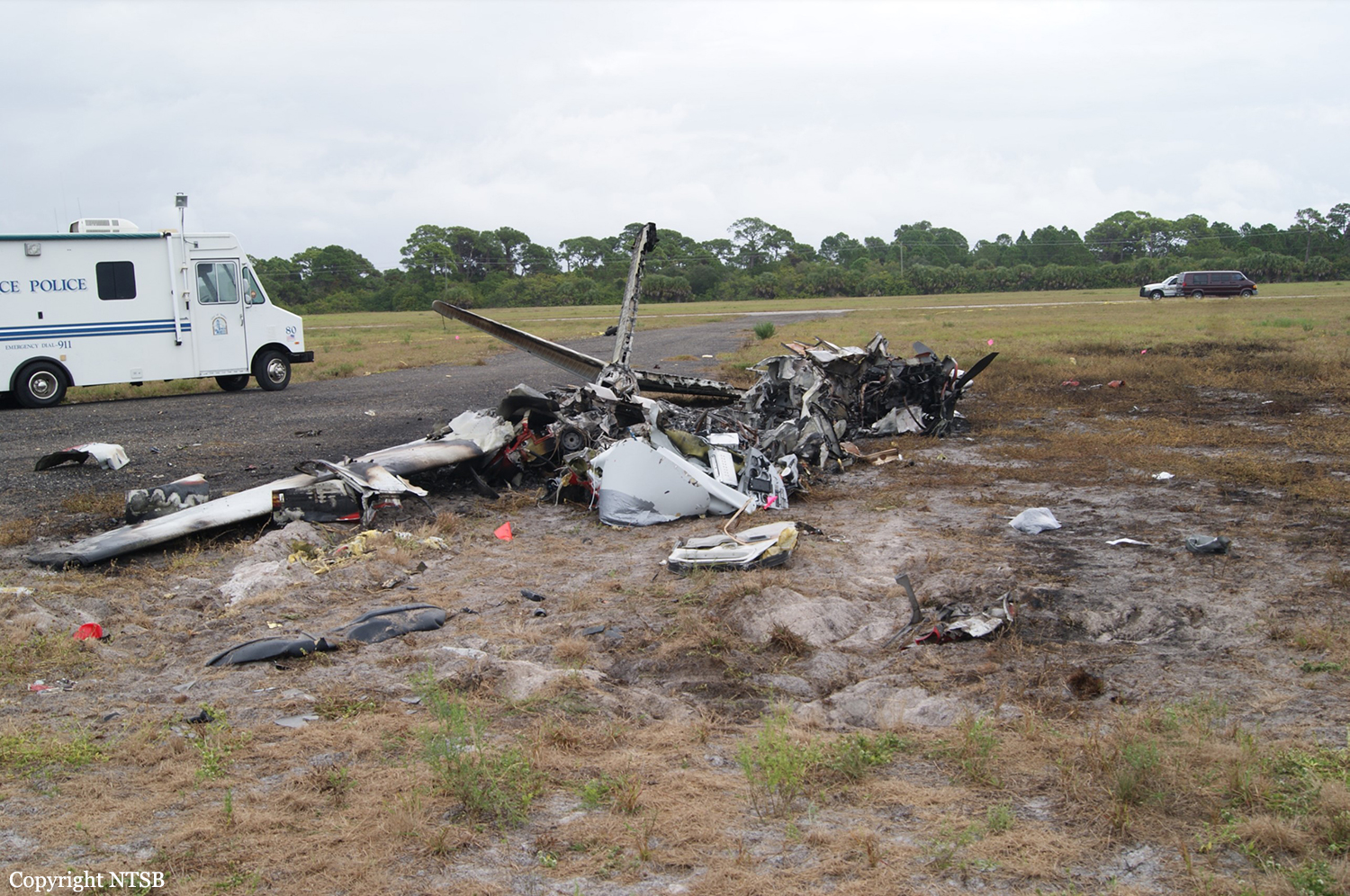
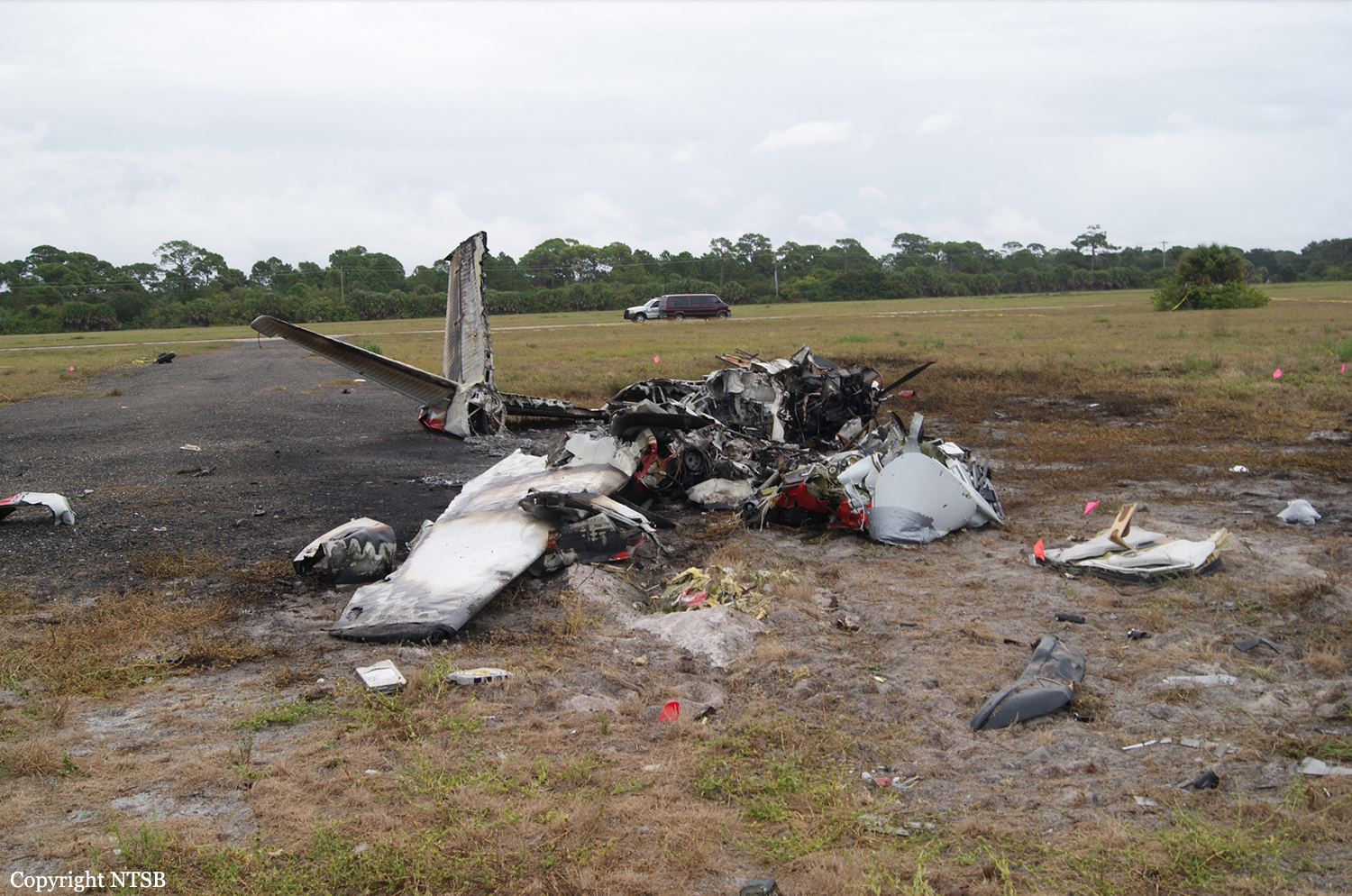
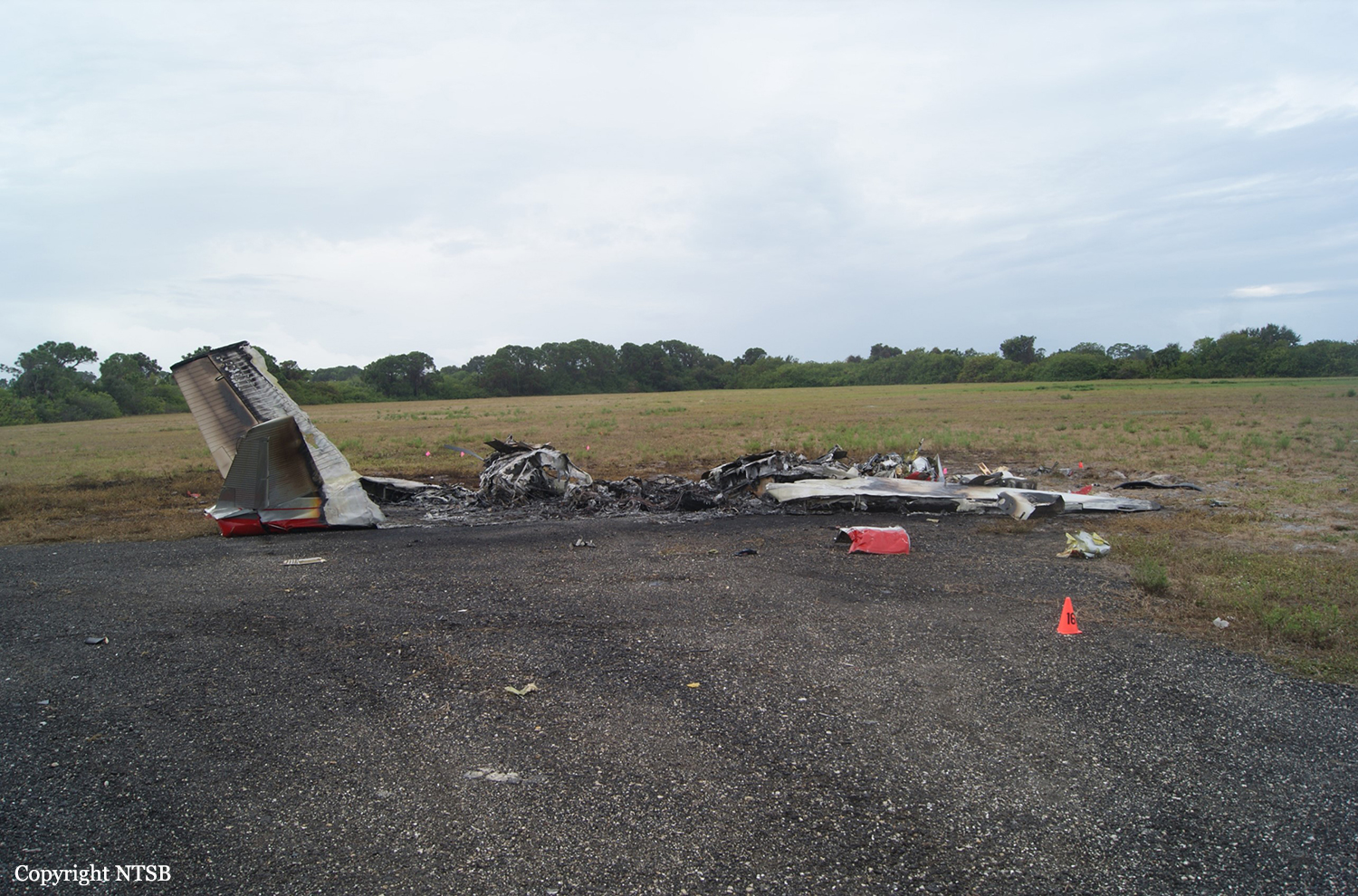
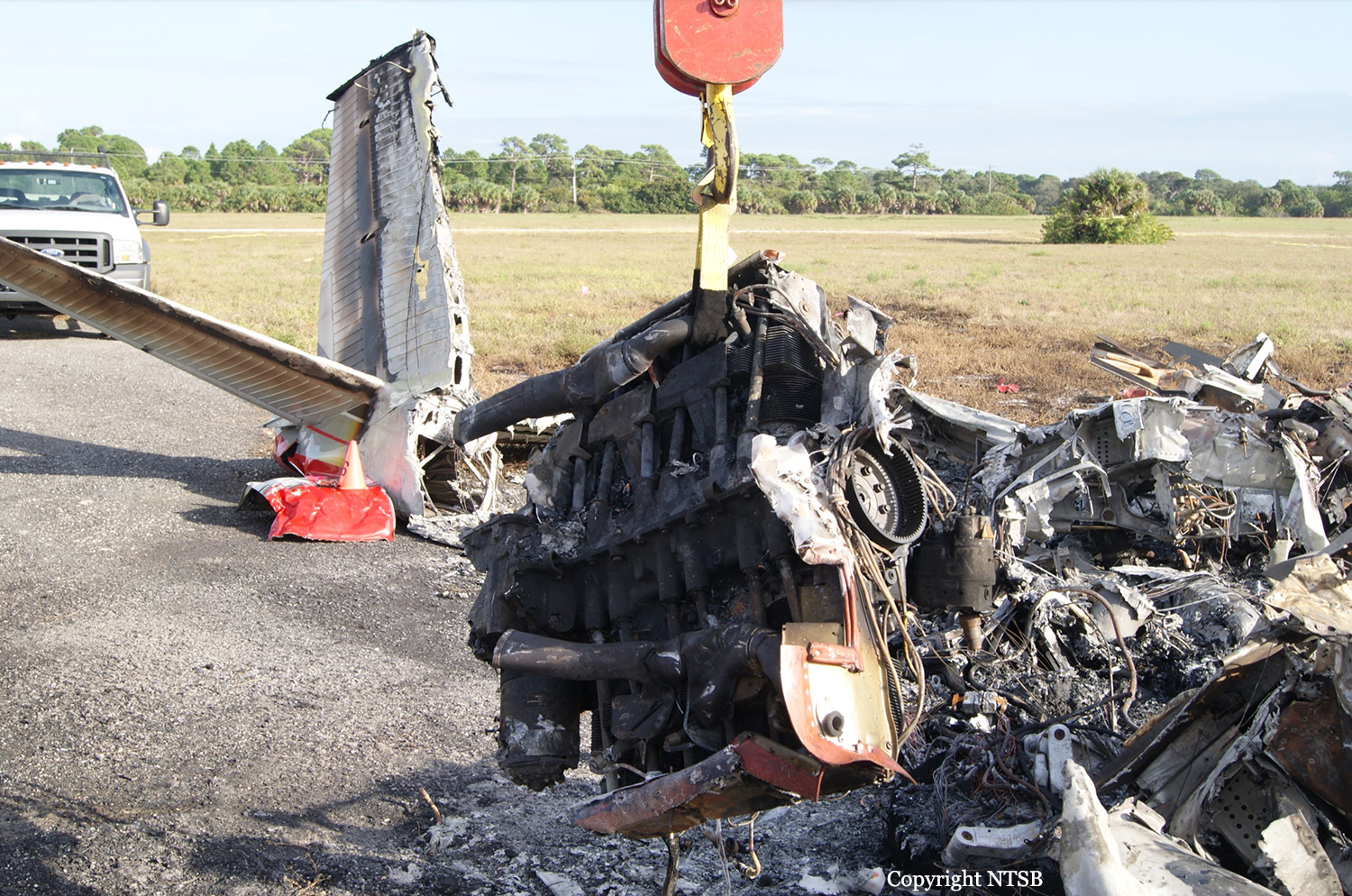
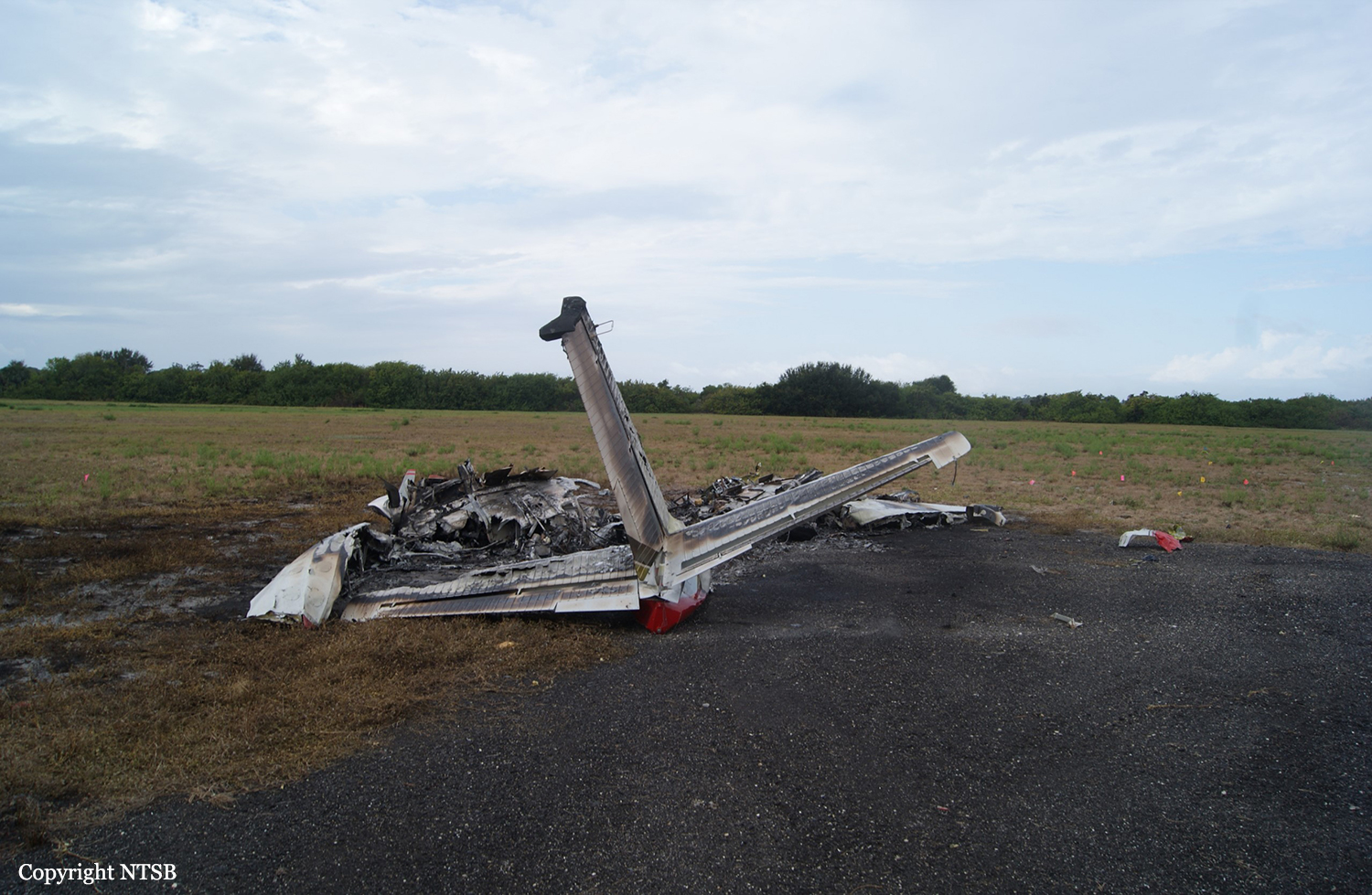
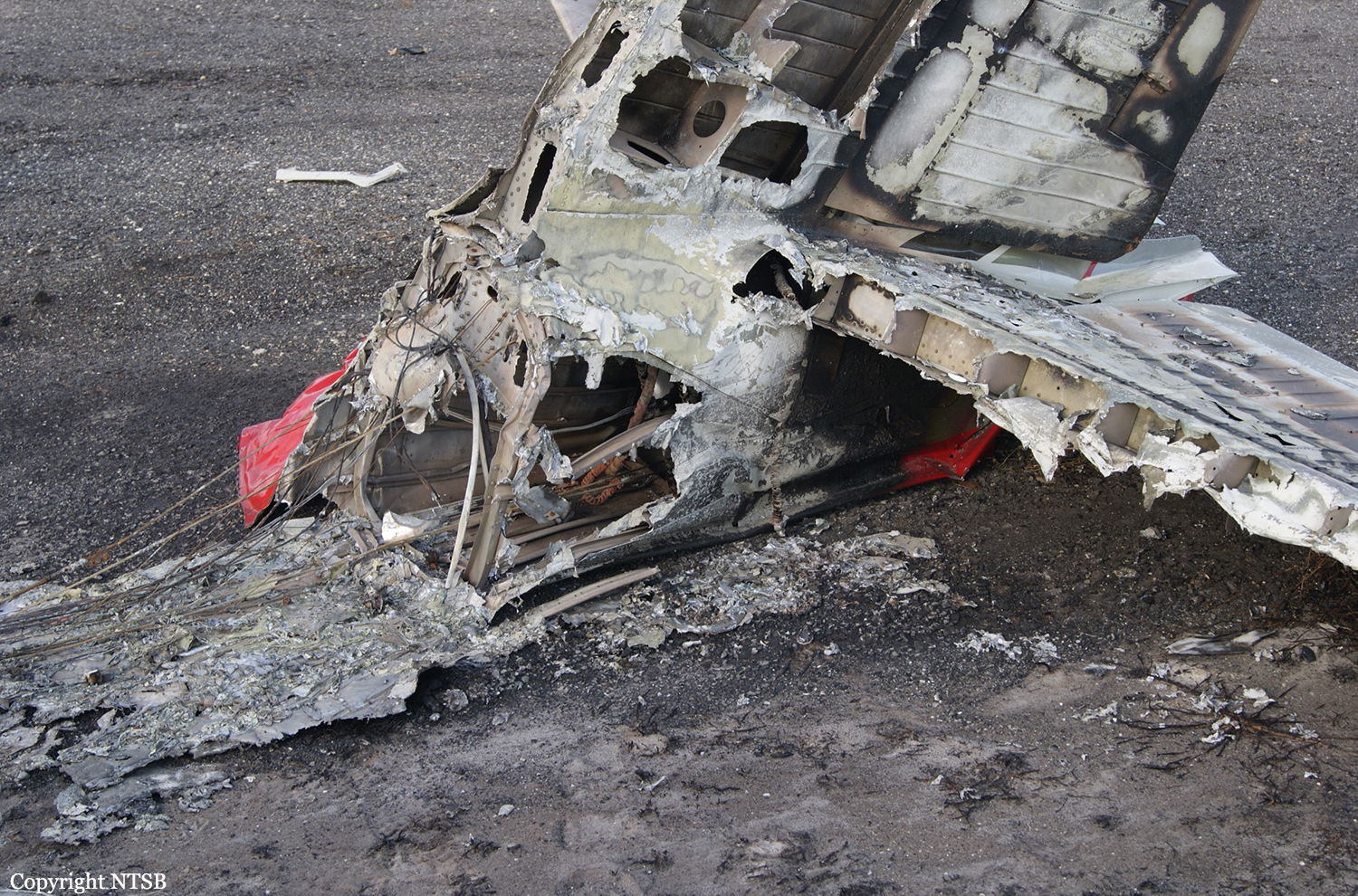
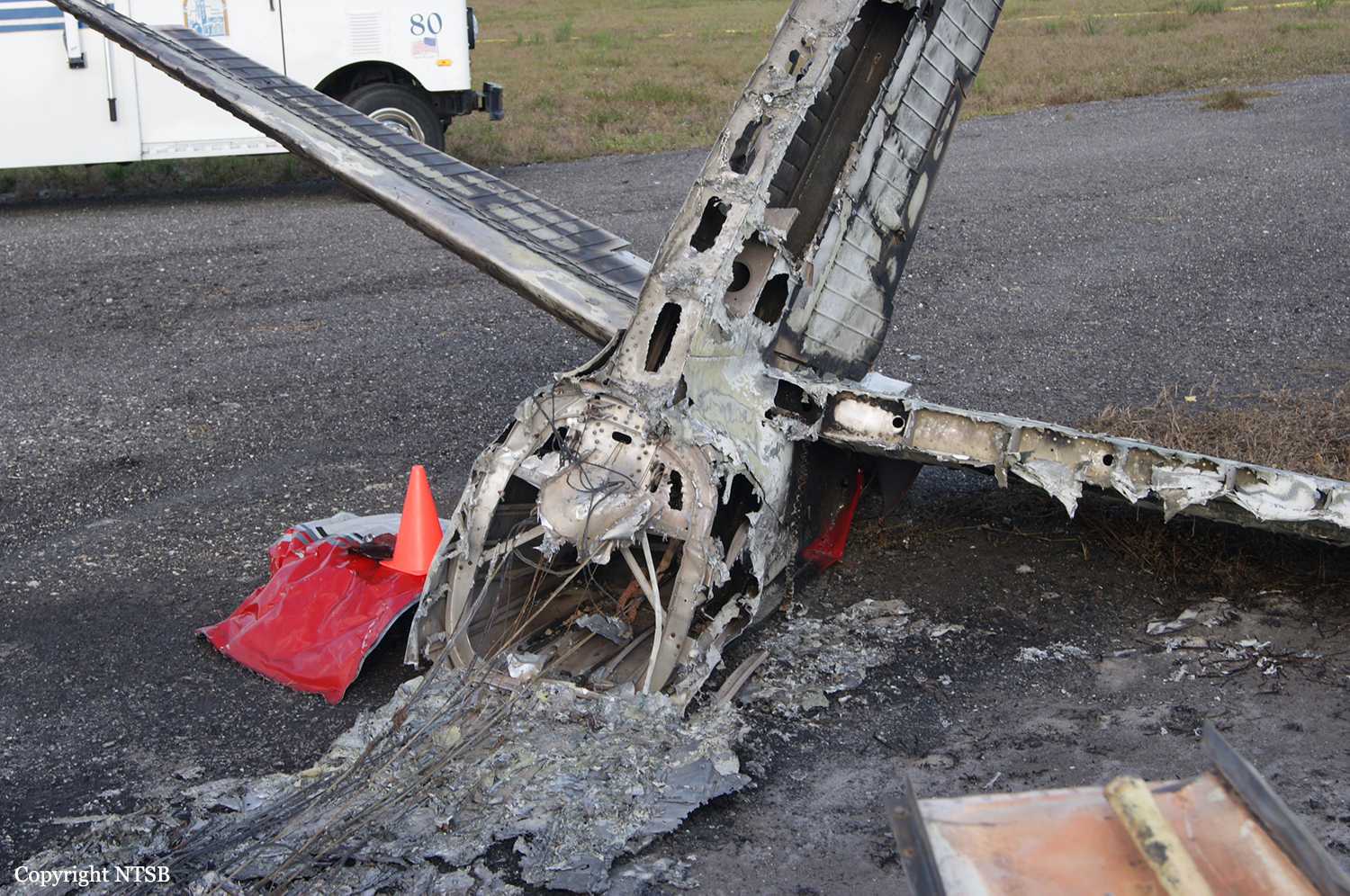
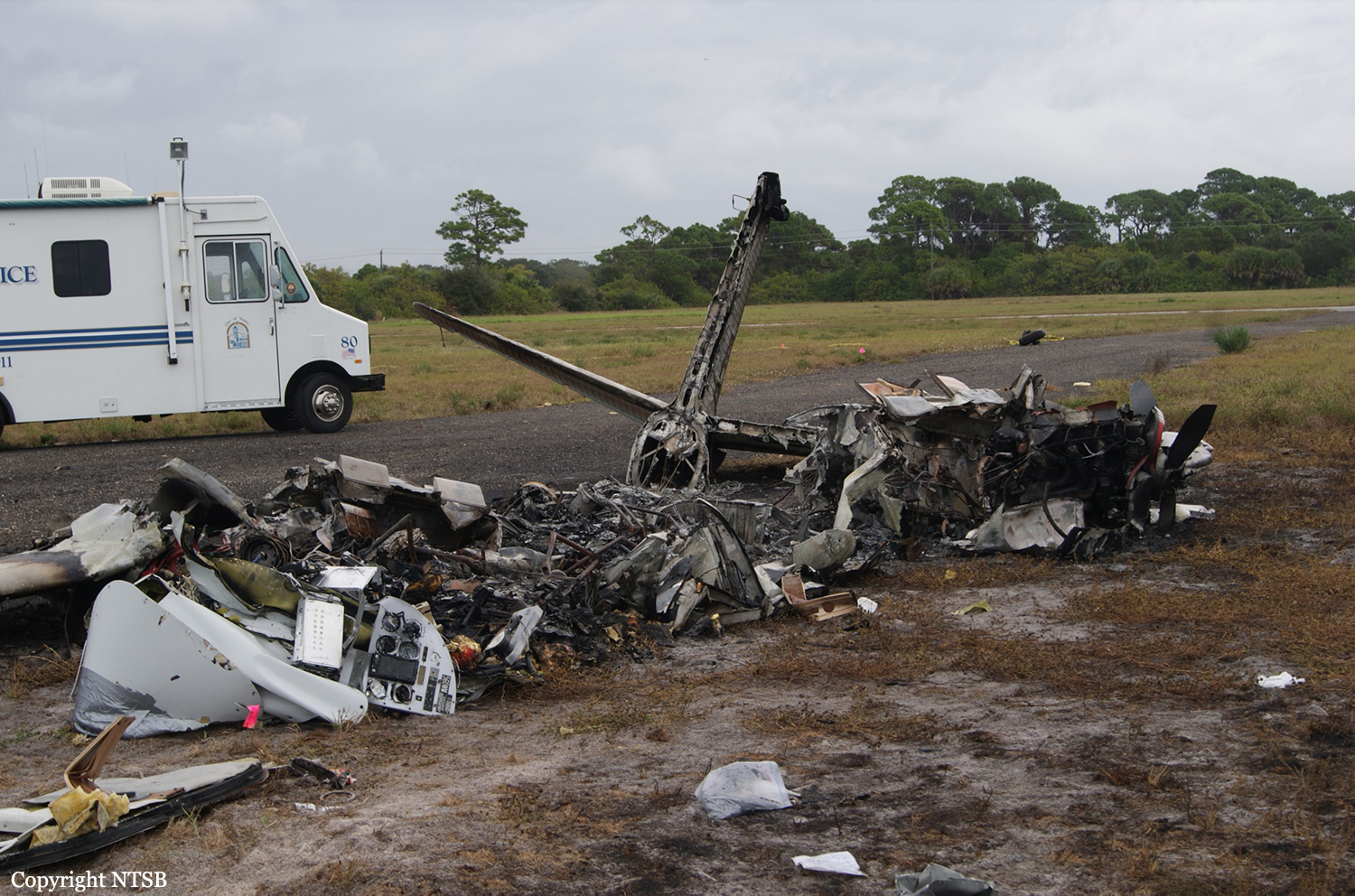
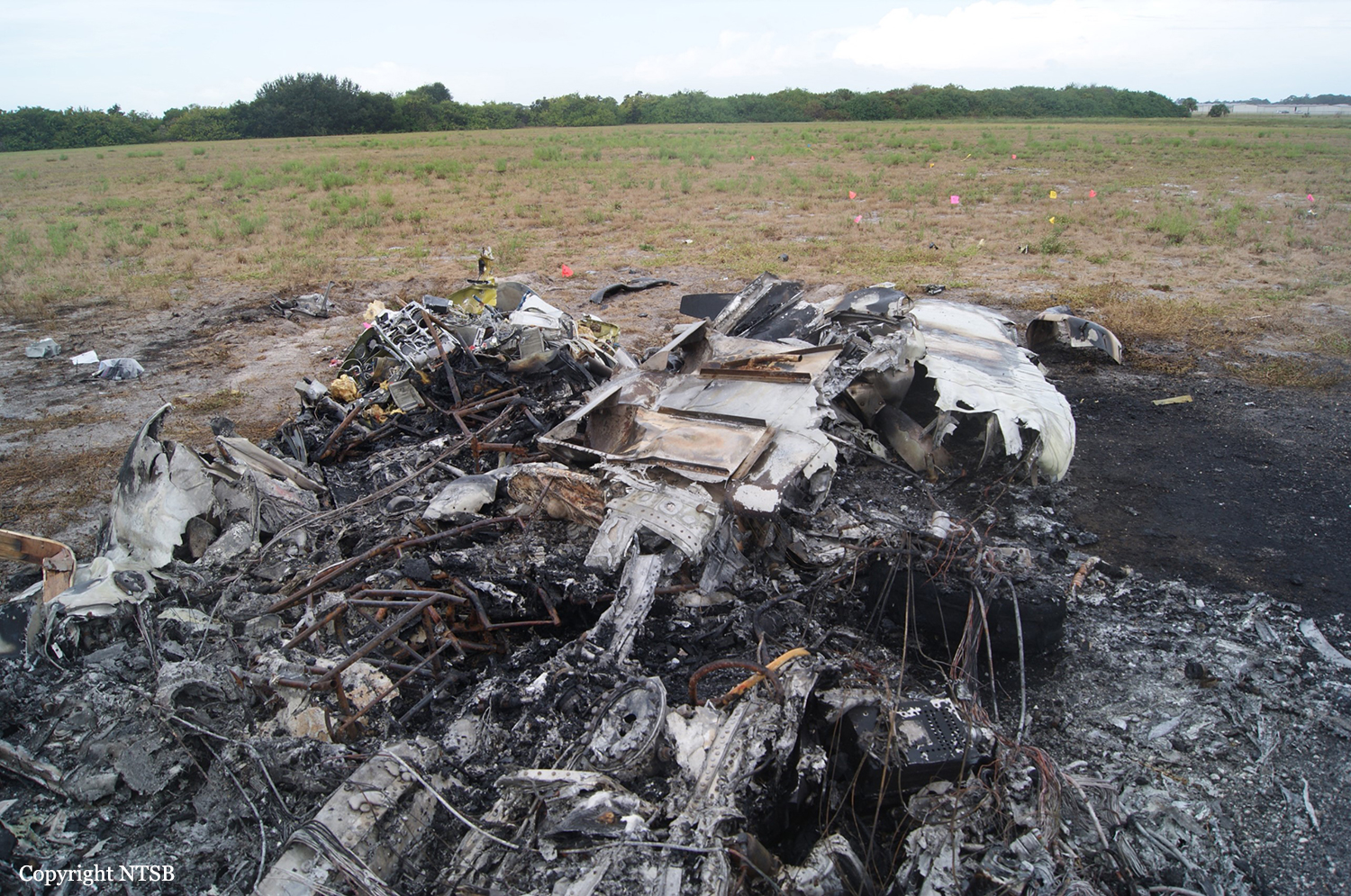
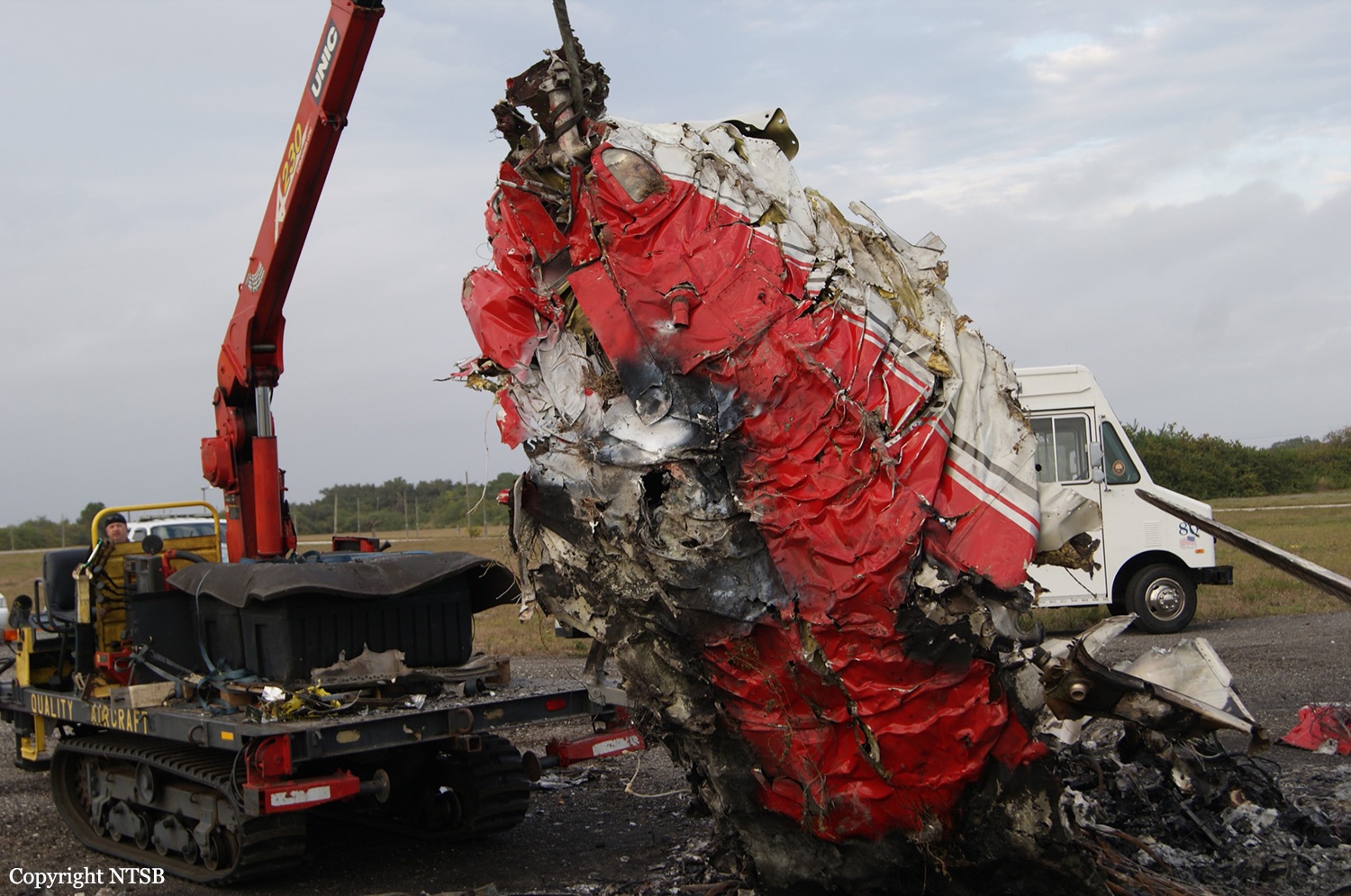
Crash of a Rockwell Aero Commander 560F in Cumberland: 4 killed
Date & Time:
Oct 14, 2007 at 1030 LT
Registration:
N6370U
Survivors:
No
Schedule:
Cumberland - Atlantic City
MSN:
560-1416-68
YOM:
1964
Crew on board:
1
Crew fatalities:
Pax on board:
3
Pax fatalities:
Other fatalities:
Total fatalities:
4
Aircraft flight hours:
3705
Circumstances:
The airplane was loaded to within a few hundred pounds of its maximum gross takeoff weight, and departed from an airport located in a valley, surrounded by rising terrain. Although visual conditions prevailed at the accident airport, fog was present in the adjacent valleys. During the initial climb after takeoff, the right engine lost partial power due to a failure of the number one cylinder exhaust valve. The pilot secured the right engine; however, he was unable to maintain a climb with only the left engine producing power. The airplane was manufactured in 1964. Review of weight and performance data published at the time of manufacture, revealed that the airplane should have been able to climb about 400 feet-per-minute with a single engine producing power. No current weight and balance data was recovered, and due to impact and fire damage, the preimpact power output of the left engine could not be determined. Both engines were last overhauled slightly more than 12 years prior to the accident, and flown about 310 hours during that time. For the make and model engine, the manufacturer recommended overhaul at 1,200 hours of operation, or during the twelfth year.
Probable cause:
A partial power loss in the right engine due to the failure of the number one exhaust valve, and the airplane's inability to maintain a climb on one engine for unknown reasons. Contributing to the accident were fog and rising terrain.
Final Report:
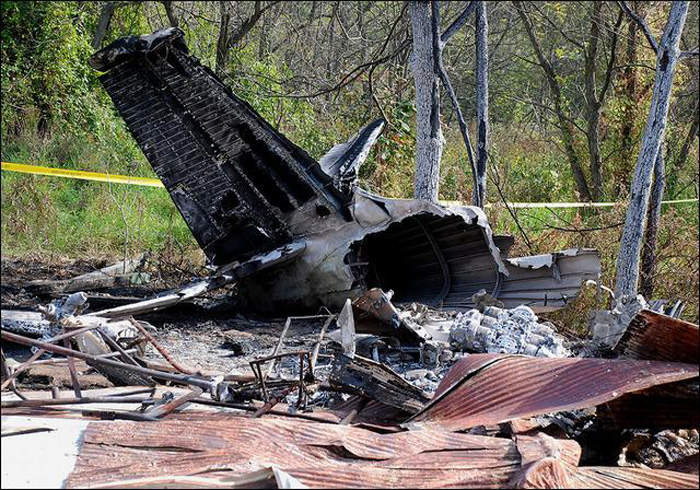
Crash of a Rockwell Aero Commander 560F near London
Date & Time:
Aug 20, 2002
Registration:
N201KS
Survivors:
Yes
MSN:
560-1066-22
YOM:
1961
Crew on board:
1
Crew fatalities:
Pax on board:
1
Pax fatalities:
Other fatalities:
Total fatalities:
0
Circumstances:
The pilot attempted to take off from a private grass airstrip (2,400 feet long) located at 22678 Purple Hill Road, about 13,5 km north of London Airport, Ontario. The aircraft failed to get airborne and eventually came to rest in a cornfield. The aircraft was damaged beyond repair and both occupants were injured. A witness observed smoke coming from the aircraft's wheels and the pilot suspected that the parking brake was not fully disengaged.
Crash of a Rockwell Aero Commander 560A in Belleview: 2 killed
Date & Time:
Jan 30, 1999 at 1740 LT
Registration:
N919VC
Survivors:
Yes
Schedule:
Belleview - Belleview
MSN:
560-0290
YOM:
1956
Crew on board:
1
Crew fatalities:
Pax on board:
3
Pax fatalities:
Other fatalities:
Total fatalities:
2
Captain / Total hours on type:
298.00
Aircraft flight hours:
5515
Circumstances:
After takeoff, the flight climbed to 1500 feet and the pilot reduced the engine RPM to 3000. The pilot also reported that within seconds of reducing the engine RPM the left engine sputtered. The pilot turned on the fuel boost pump in an effort to restore full engine power. Immediately afterward, the right engine sputtered and lost power. The pilot turned on the right engine boost pump again in an effort to restore full power. Attempts by the pilot to restore normal engine operation failed. The pilot selected an area for an emergency landing. The pilot recalled that as he prepared for an emergency landing, the airplane would yaw right and left as the engines momentarily gain and lose power. The airplane collided with tops of several trees. The airplanes subsequently collided with a single family home adjacent to the lake. Examination of the airframe and engine assemblies failed to disclose a mechanical malfunction or a component failure. During the examination of the fuel system, approximately 2 1/2 pints of fuel were recovered. The pilot reported that he thought he had about 50 gallons of fuel when he departed.
Probable cause:
The pilot's inadequate preflight planning of the fuel required for the flight that resulted in fuel exhaustion and the subsequent total loss of engine power to both engines.
Final Report:
Crash of a Rockwell Aero Commander 560 in Ketchum: 2 killed
Date & Time:
Sep 8, 1995 at 1310 LT
Registration:
N731R
Survivors:
No
Schedule:
Elko - Hailey
MSN:
560-0219
YOM:
1955
Crew on board:
1
Crew fatalities:
Pax on board:
1
Pax fatalities:
Other fatalities:
Total fatalities:
2
Circumstances:
The aircraft was VFR inbound to the Hailey airport when the pilot contacted the tower at 1247 and reported 10 miles south. During the next 7 minutes the pilot and controller communicated back and forth and the pilot never visually acquired the airport. A number of witnesses located north of the airport observed the aircraft flying northbound along the highway into upsloping, mountainous terrain at an estimated altitude of 400 feet above ground, and with the landing gear extended and the engines developing power. The aircraft was described as low and slow and was observed to dip its wings during a left turn and then descend steeply to the ground. The aircraft impacted terrain in a steep nose down attitude. There was no evidence of flight control or powerplant malfunctions. High density altitude conditions existed at the accident site. Toxicological examination revealed a finding of 0.068 ug/ml and 0.183 ug/ml of Chlorpheniramine (an over-the-counter antihistamine) in kidney and heart tissue respectively.
Probable cause:
The pilot-in-command's failure to maintain adequate airspeed during a turn resulting in a stall/spin. Factors contributing to the accident were the pilot-in-command's becoming geographically disoriented as well as his improper in-flight decision, and mountainous terrain.
Final Report:

Crash of a Rockwell Aero Commander 560F in Miami: 1 killed
Date & Time:
Aug 22, 1995 at 1123 LT
Registration:
N4630W
Survivors:
No
Schedule:
Miami - Miami
MSN:
560-1068-24
YOM:
1961
Crew on board:
1
Crew fatalities:
Pax on board:
0
Pax fatalities:
Other fatalities:
Total fatalities:
1
Circumstances:
The non-certificated pilot took a multiengine airplane without the owner's permission and attempted to fly around the traffic pattern. On base leg to final, the airplane was observed to stall, enter a nose down descent, and crash. The non-certificated pilot was apparently unaware that the static system ports had been taped over for avionics work.
Probable cause:
Failure of the non-certificated pilot (unqualified person) to maintain sufficient airspeed, which resulted in a stall and a collision with the ground. Factors relating to the accident were: the non-certificated pilot's unauthorized use of an airplane that had static ports taped for maintenance, and his failure to properly preflight the airplane (and ensure the static ports were clear).
Final Report:
Crash of a Rockwell Aero Commander 560 near Essex: 1 killed
Date & Time:
Oct 5, 1994 at 1209 LT
Registration:
N251VW
Survivors:
No
Schedule:
Thermal - Las Vegas
MSN:
560-0212
YOM:
1955
Crew on board:
1
Crew fatalities:
Pax on board:
0
Pax fatalities:
Other fatalities:
Total fatalities:
1
Circumstances:
The private pilot with about 3,000 hours of reported flight time and no instrument rating departed his home base, Thermal, California, for a short cross-country flight to Las Vegas, Nevada. There was no record of a preflight weather briefing, and no flight plan was filed. When the pilot failed to arrive at his destination, a search was initiated. The wreckage was located 6 days after it departed Thermal with the help of radar data. According to the radar data, the airplane was at 16,100 feet when it started a series of maneuvers while descending. Postcrash examination of the wreckage revealed that the left wing outer panel, aileron, and left engine were located some distance from the main wreckage. The weather at the time of the accident was reported as marginal VFR with thunderstorm cell activity in the area. The airplane did not have a working oxygen system nor was it equipped for instrument flight nor icing conditions.
Probable cause:
The pilot's inadvertent flight into IMC conditions. Contributing to the accident was a loss of control of the aircraft and exceeding the structural limits of the aircraft. The weather conditions were factors.
Final Report:
Crash of a Rockwell Aero Commander 560F in Manville: 4 killed
Date & Time:
Jul 23, 1992 at 1515 LT
Registration:
N560CM
Survivors:
No
Schedule:
Salt Lake City - Waupaca
MSN:
560-1311-61
YOM:
1964
Crew on board:
2
Crew fatalities:
Pax on board:
2
Pax fatalities:
Other fatalities:
Total fatalities:
4
Captain / Total hours on type:
158.00
Aircraft flight hours:
4538
Circumstances:
During a cross country business flight, which was filed and flown under instrument flight rules, the pilot and controller had numerous communications regarding routing and weather, and the aircraft was circumnavigating weather areas. The pilot reported entering what his stormscope showed as a 'clear' area after encountering rain and moderate turbulence at temperatures conducive to structural icing. The controller noted a 1,000 foot loss of altitude from the assigned cruise altitude of 17,000 feet, followed by a loss of altitude readout. Shortly thereafter the aircraft disappeared from the controller's radar scope. The wreckage was found near the last radar fix. The airplane impacted in a near vertical descent. All four occupants were killed.
Probable cause:
A loss of control following flight into weather conditions containing thunderstorms, turbulence and icing conditions. Factors were: inaccurate weather evaluation and flight into known adverse weather by the pilot in command.
Final Report: